Stations of a Catholic Funeral – Part 2: The Vigil – Funeral Facts with Deacon Marc
Below is a transcript the the video:
Last week when we got together we talked a little bit about what were the reasons we have Catholic funerals and talked about that we give thanks to God for his love and mercy of us that we worship God that we asked God to help us fill with his graces that void of that loss that we have, and then finally we pray for that person that passed away.
And then we introduced at that time that there are three stations to right of Christian funerals as the vigil or sometimes called the wake the funeral liturgy and then the right of committal and so today what we’re going to do is spend a little bit of time just going through that first one the vigil service or the wake and what is that look like and what is its purpose.
The vigil has evolved many times over the years, I can remember early in my childhood my parents going to vigils for many, many nights in a row. My wife can tell stories about her grandfather having wake or vigil on the living room table at their house in New York.
Typically vigils are the night before the funeral but they are usually before the funeral it’s the first time the community gathers together to come together to remember the person passed away but then also at the same point in time beginning praying to god and filling that void of loss with god’s love with god’s grace and the graces of the holy spirit and so it’s that time when they come together. The vigil has a couple different components to it.
A traditional vigil starts out with the introductory right welcoming opening prayer and then we ground ourselves as we should always in scripture with the opening reading either from the Old Testament or the New Testament the gospel a brief, brief homily to ground ourselves and have a reflection in that scripture and then after we ground ourselves in scripture we then have time for intercessory prayer and that intercessory prayer can take on a different component with it.
Often times it can be traditional like we do at mass where we say we pray for the world. Let’s pray to the Lord. Lord hear our prayer.
And we do those different litanies of intercessory prayers. The intercessory prayer can also be the rosary. The rosary is one big intercessory prayer where we’re asking for Mary to intercede on our behalf for us. And so we have that intercessory prayer.
Then finally ending with the our father and a blessing of all those who are coming here and again as we’re thinking about those components what we’re doing again is grounding ourselves and remembering that god loves us that we’re worshiping him we’re praying for that person who passed away and then at the same point in time we’re asking god to fill us with his love so that we can make it through that very difficult time.
The vigil again is that first time we get together and we start remembering that person so it’s a very appropriate time to have eulogies and how people speak about that person and the impact of that person in their lives and it really is that preparation stage where spiritually, psychologically, we’re getting ready to make that transition from the home then to the church where our second station is the liturgy and we’ll talk about that in a future video and then finally, the Committal where we go to the cemetery and so you have this progression and at the same point in time supporting each other through that
So that’s our funeral facts for this week. We’ve talked about the vigil at first stage. An important stage for us as we could go through the three stations of the Right of Christian Funerals.
Make it a great week and God bless you.
Catholic Funeral & Cemetery Services of Colorado
A Ministry of the Archdiocese of Denver
